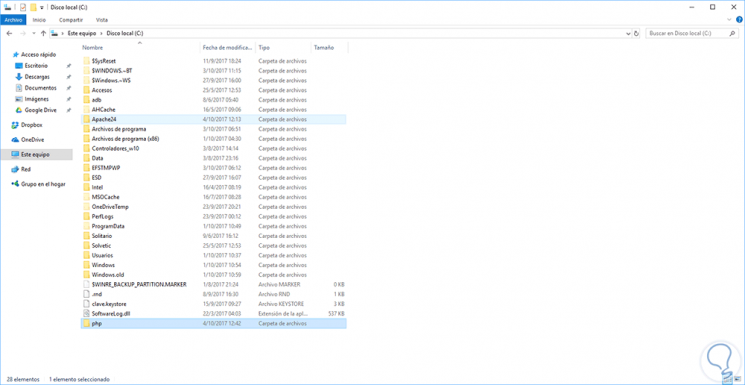This article is a tutorial on how Apache and PHP can be set up in Windows. Web servers are computers that are usually set up in a facility called a data centre. These servers are maintained and operated by hosting companies, to store websites, so that people can visit them on the Internet. Php-7.3.1-Win32-VC15-x86.zip; Things I've already checked: Both Apache and PHP are compiled with the same version of C Redistributable Visual Studio; I'm using the Thread Safe version of PHP; The file php7apache24.dll is in the main PHP folder and I've copied it to the folder Apache24/modules; I've added the following lines to the httpd.conf. Configure IIS, Skype and other software (optional) If you have a Professional or Server version of. Configuring the Apache Web Server to Run PHP on Windows. Listed below is information on how to configure the Apache web server to run PHP programs on Windows machines. How to install PHP on Windows 10 with Apache Web Server, configuring PHP as an Apache Module.How to install Apache Web Server on Windows 10:https://www.youtu.
- PHP 7 Tutorial
- PHP 7 Useful Resources
Install Php Apache Windows 10
- Selected Reading
Docker Apache Php Mysql Windows 10

To install Apache with PHP 5 on Windows follow the given steps. If your PHP and Apache versions are different then please take care accordingly.
Step 1
Apache Windows 10 Download
Download Apache server from www.apache.org/dist/httpd/binaries/win32. You want the current stable release version with the no_src.msi extension. Double-click the installer file to install; C:Program Files is a common location. The installer will also ask you whether you want to run Apache as a service or from the command line or DOS prompt. We recommend you do not install as a service, as this may cause problems with startup.
Extract the PHP binary archive using your unzip utility; C:php7 is a common location.
Rename php.ini-development to php.ini. Open this file in a text editor (for example, Notepad). Edit this file to get the configuration directives; At this point, we highly recommend that the new users set error reporting to E_ALL on their development machines.
Tell your Apache server where you want to serve files from and what extension(s) you want to identify the PHP files (.php is the standard, but you can use .html, .phtml, or whatever you want). Go to your HTTP configuration files (C:Program FilesApache GroupApacheconf or whatever your path is), and open httpd.conf with a text editor. Search for the word DocumentRoot (which should appear twice) and change both the paths to the directory you want to serve files out of. (The default is C:Program FilesApache GroupApachehtdocs.). Add at least one PHP extension directive as shown in the first line of the following code −
Step 2
Open a text editor. Type: <?php phpinfo(); ?>. Save this file in your Web server's document root as info.php. Start any Web browser and browse the file. You must always use an HTTP request (http://www.testdomain.com/info.php or http://localhost/info.php or http://127.0.0.1/info.php) rather than a filename (/home/httpd/info.php) for the file to be parsed correctly
Install Apache Php 7 Windows 10
You will see a long table of information about your new PHP installation message Congratulations!